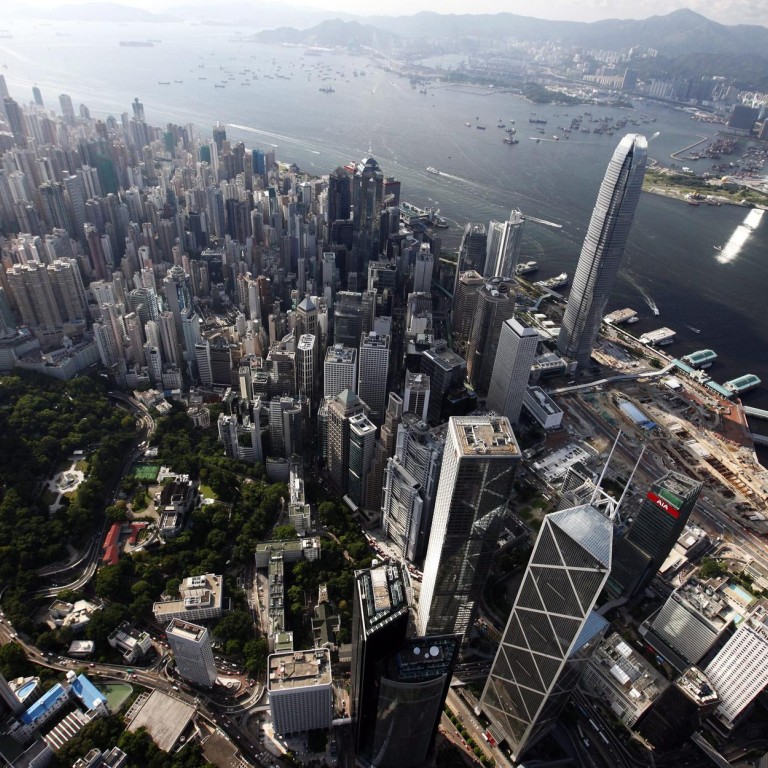
Hong Kong office shortage spurs makeovers of disused factories, warehouses
Disused factories and warehouses are being converted for use by banks and business tenants
Hong Kong investors are turning run-down factories and warehouses into offices to fill a space shortage in the city with the world's second-highest rents.
Pamfleet Group and Gaw Capital Partners are among real estate funds that bought more than HK$54 billion of the city's industrial properties in the year ended June 30, according to data compiled by Centaline Property Agency. That is the highest for any 12-month period on record, the company's data shows.
Redevelopment of vacant industrial spaces has accelerated since 2009 as investors lured by surging office rents seek to exploit the gap between the cost of acquiring the buildings and the potential return from converting them for use by banks, insurers and other business tenants.
The government has implemented policy changes since the 1980s to encourage the transformation of unused properties after manufacturing shifted to cheaper locations in the mainland and Southeast Asia.
"It's been a slow start, but things have picked up over the past few years," said Simon Lo, Hong Kong-based head of Asia research at property broker Colliers International. "Buyers are coming in with the expectation their returns will go up multiple times because of the redevelopment potential."
Demand for offices has been swelling as Hong Kong cemented its place as a regional financial hub over the past decade. Average prime office rents have risen 54 per cent to June from mid-2009, according to government figures. Average vacancy rates fell to 6.1 per cent at the end of 2012 from 11.5 per cent in 2009.
The makeovers of industrial properties will provide about 800,000 square feet of new office space in Hong Kong next year, according to Colliers. Excluding conversions, developers will add about 456,000 sq ft of new space, the broker said.
Increasing investor demand has pushed up prices of warehouses and factories almost threefold since early 2009, according to broker CBRE Group. At the end of the second quarter, warehouses fetched about HK$2,680 per square foot while factories were getting HK$3,540 per square foot. Higher prices drove down the average investment yield to below 3 per cent at the end of June, Colliers said.
By contrast, prices of prime offices in Central have doubled to more than HK$35,000 per square foot in the first half, according to government figures. Yields have fallen to about 2.8 per cent, according to Colliers.
Goodman Group, whose funds own about 40 per cent of Hong Kong's prime warehouse space, is taking advantage of rising values to exit some properties. In the past year it has sold some of its older and smaller assets to buyers that plan to convert them for office use, said Philip Pearce, Greater China managing director of the Sydney-based company.
"What we have been able to do is redeploy that money to other acquisitions and upgrade existing properties," Pearce said. "And when you've taken supply out of the market, it clearly has an impact" on rents, he said.
Pamfleet and Swiss private-equity fund Partners Group in April completed a HK$958 million acquisition of a 13-year-old factory building in Kowloon East, which has been designated by the government as a secondary business district.
The building is within walking distance from the 21-storey, 1.1 million square foot Manulife Financial Centre developed by Sun Hung Kai Properties, Hong Kong's biggest builder by market value, and Henderson Land Development on an old industrial site in 2007.
Pamfleet will convert the project into an office tower that can be opened to tenants as early as the end of this year, chief executive Andrew Moore said.
New office supply in Hong Kong will fall about a third short of demand by 2020, according to CBRE. To tackle the shortage, the government has pledged to develop Kowloon East, which includes the old Kai Tak airport site, into a secondary financial district with more than 40 million square feet of prime office space.
Almost 90 per cent of the 1,500 industrial buildings in Hong Kong are eligible for conversion under the government's plan, according to Colliers.

